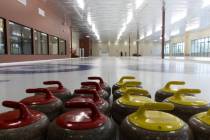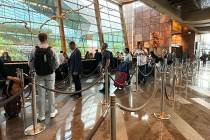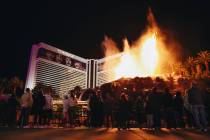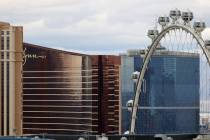Planners should think outside box on Las Vegas stadium parking
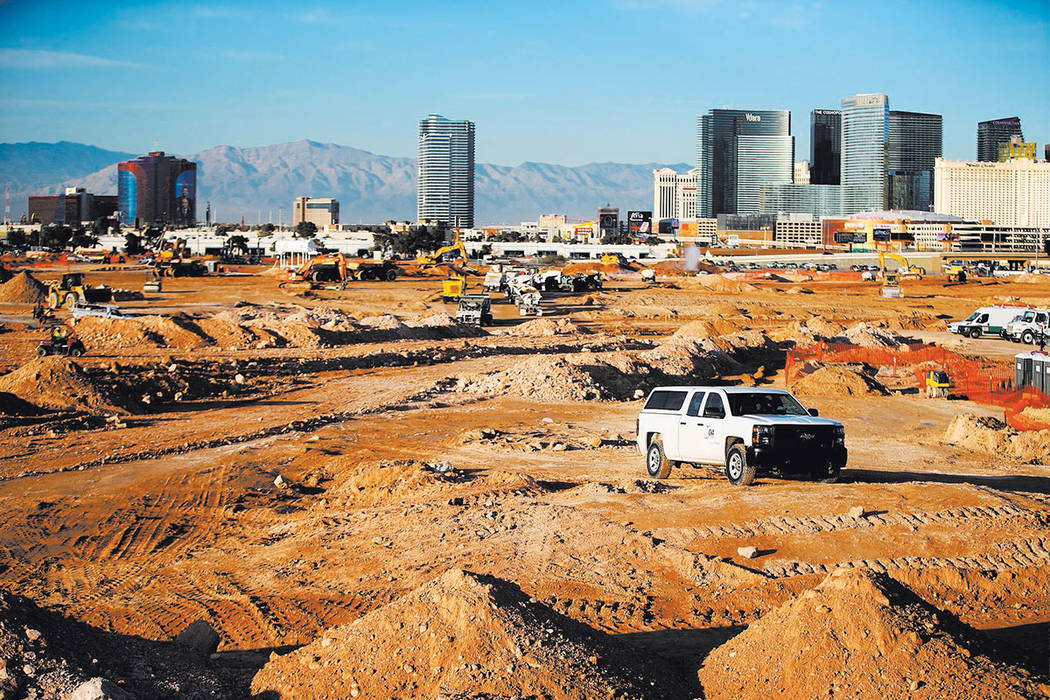
When the Raiders try to solve the parking problem they have with the Las Vegas stadium, they shouldn’t be asked to provide 16,250 off-site spaces as required by Clark County Title 30, Chapter 60, which includes the formula requiring one space for every four seats in the building.
It would be a waste of resources.
Instead, the Clark County Commission should consider incentivizing the Raiders to work toward a mass-transit solution that would benefit citizens every day instead of just for the 50-odd big events, including Raiders home games, that would occur at the stadium once it opens.
As the Raiders work toward fulfilling what could become an outdated requirement, planners should be thinking outside the box.
The requirement is outdated because this will be the first stadium planned in the disruptive transportation era. Like it or not, Uber and Lyft are here and are snatching a high share of rides of visiting tourists.
Technologists already are talking about — and during CES demonstrating the effectiveness of — self-driving vehicles. Imagine hopping in your car to go to a game or concert, getting dropped off, then programming your car to park in your home garage. It’s not going to happen tomorrow, but that’s the future.
Meanwhile, Southern Nevada has continually missed the boat on mass transit. While the Regional Transportation Commission of Southern Nevada is months away from receiving a study on light rail within the city’s tourism corridor, other cities have demonstrated the effectiveness of a mass transit system on delivering and dispersing stadium traffic.
Denver. Phoenix. Minneapolis. San Diego. I’ve used mass transit to get to games in all of those cities. And there are others that are just as effective, including Oakland on the Bay Area Rapid Transit system.
It isn’t too difficult to imagine development of a train from McCarran International Airport through that middle-lane runway tunnel to the existing rail right-of-way that skirts McCarran on the south and abuts the Bali Hai Golf Club. From there, it’s a straight shot north along the Strip, all the way to downtown Las Vegas, where it could meet up with the planned Maryland Parkway light-rail route and form a loop that could take tourists to the front door of most of the major resorts and a short walk to the stadium. And the system could connect fans to Cashman Field, home of the Las Vegas Lights soccer team.
If half the fans attending Raiders games come from out of town as the team projects, it would be an easy train ride from nearly any Strip resort to a game or event. Locals could also park at resorts. Yes, they probably would be charged for parking at whatever price the market would bear.
The Raiders would be free to develop as little or as much off-site parking as they want, possibly at Bali Hai, where a train stop could transport fans to a Mandalay Bay or Luxor stop where they could walk on pedestrian bridges over Interstate 15 to the game. The Raiders have said they want to emphasize tailgating. Bali Hai could be the perfect place to do it.
Some of the Clark County commissioners I talked with about the idea were intrigued.
Chris Giunchigliani, an avid supporter of the Maryland Parkway light-rail proposal, said she liked the idea. Larry Brown, who represents the commission on the Regional Transportation Commission and the Las Vegas Convention and Visitors Authority, said mass transit could be one piece of the overall stadium parking solution.
Chairman Steve Sisolak said any diversion of resources from a parking lot to a transit system by the Raiders would be a drop in the bucket as far as the total cost a system would be. But he acknowledged that at least it would be something.
All three commissioners agreed the Las Vegas Monorail isn’t the answer, though it would help transport some fans to games. The Kimley-Horn and Associates parking study conducted in July estimated potential monorail traffic at around 4,500 per game, or nearly 7 percent of stadium capacity, if the line is extended south to Mandalay Bay as suggested.
Sisolak and Giunchigliani said they believed the commission could waive the parking requirement if it chooses.
Consider the benefits: no need to pave a massive parking lot that would get minimal use but instead a transit system to connect the airport with thousands of hotel rooms. If the Raiders contribute, they would be a part of a solution to a bigger city problem and would be heroes.
Sure, it wouldn’t be easy. The cost is enormous. Right-of-way and engineering issues would need to be solved. The resort community could be the biggest roadblock if it doesn’t like the idea of placing light rail down the center of Las Vegas Boulevard.
But the long-term benefits would be fantastic and fix a bigger transportation problem that has plagued Southern Nevada for too long.
Contact Richard N. Velotta at rvelotta@reviewjournal.com or 702-477-3893. Follow @RickVelotta on Twitter.









